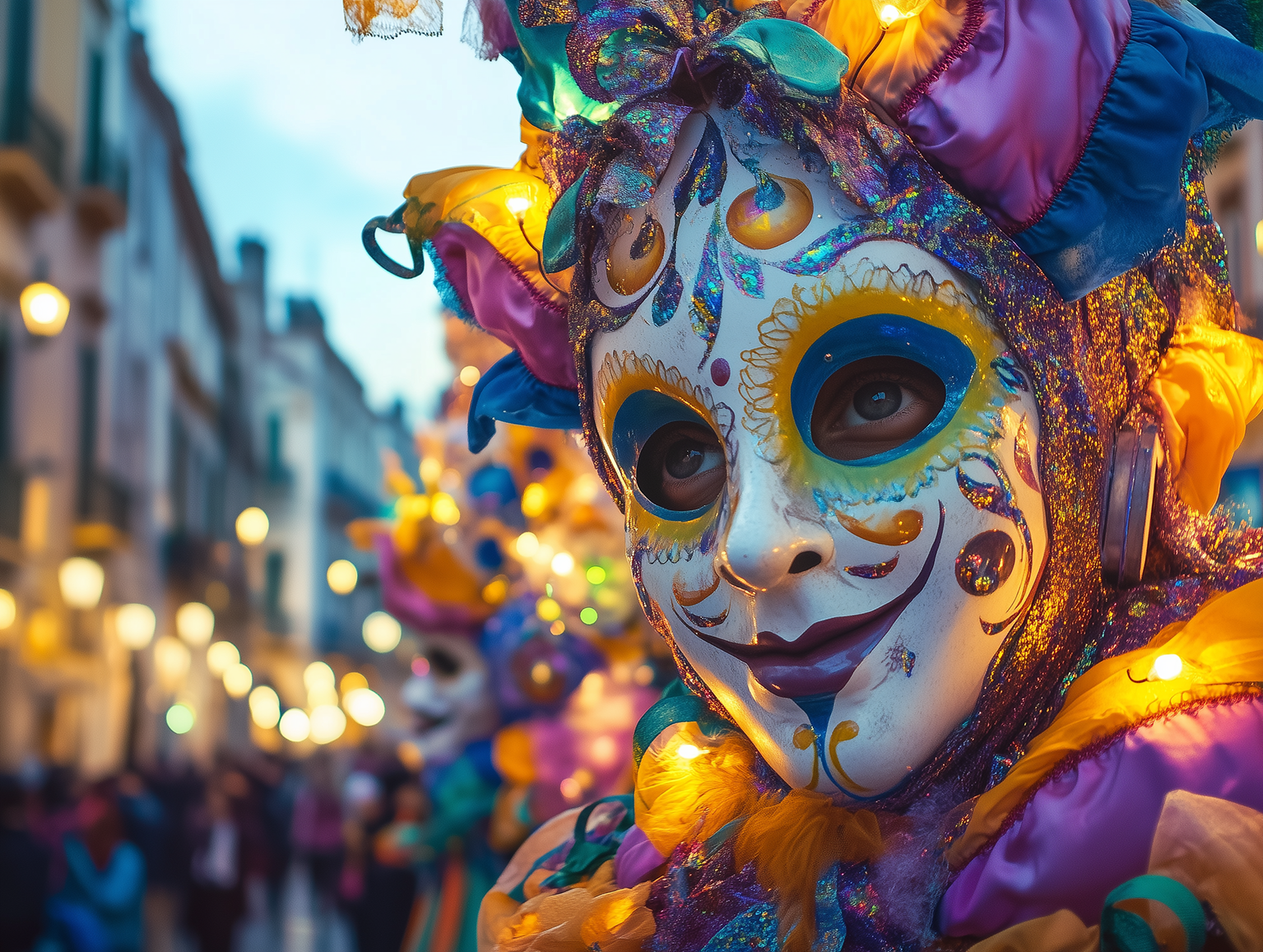Carnivals in Italy: A Celebration of Life, Arts and Expression

Carnivals celebrate life in colourful forms, parades, costumes, and festivities, reflecting various cultural, historical, and social activities that bring people together to share experiences, creativity, happiness, and traditions. In Italy, the month of February is widely known as Carnival Month. Carnivals blend ancient traditions, religious practices, cultural customs, and contemporary creativity.
The term “carnival” is believed to come from the Latin phrase “carne vale”, which means farewell to meat, marking the last feast before a period of Christians' fasting and penitence leading up to Easter. Italy hosts several well-known carnivals, attracting domestic and international visitors who enjoy the atmosphere. Some important yearly carnivals are Carnivale di Venezia (Venice Carnival), Viareggio Carnival, Cento Carnival, and Acireale Carnival. The Venice Carnival showcases the city's legacy of elegance and craftsmanship through its masks and plays a major role in popularising extravagant mask and costume celebrations.
The 2025 Venice Carnival will take place from February 14 to March 4, featuring grand parades, masked balls, and performances, particularly around Piazza San Marco and the Grand Canal. This year, the carnival celebrates the 300th anniversary of Giacomo Casanova with a special edition entitled “Il Tempo di Casanova”, dedicated to the timeless figure of the Venetian. Highlights of the event include the Flight of the Angel and the Festa delle Marie parades. Piazza San Marco will be transformed into a vibrant hub of music, theatre, and street performances throughout the carnival. Workshops for creating masks, private masquerade balls, and themed dinners at historic restaurants add to the festive spirit.
The Carnival of Viareggio is an annual carnival held in the city of Viareggio on the Tuscan coast. It is considered among Italy's most renowned carnival celebrations, lasting several weekends. The soul of the Viareggio Carnival is the figurative works in papier-mâché, a material with which the artists of Viareggio create extraordinary allegorical floats. These floats often depict caricatures of celebrities, famous figures, and cultural trends. The craftsmanship of these floats is made using a unique Tuscan papier-mâché technique that becomes the hallmark of the carnival. The event's official mascot, Burlamacco, is a clown-like figure who presides over the Carnival. To this day, Burlamacco represents the joy of the carnival in a costume inspired by clowns and the iconic red-and-white umbrellas of Viareggio’s beaches.
The Cento Carnival, twinned with Rio de Janeiro’s Carnival, blends Italian and Brazilian influences and flair. The event is in Cento, Emilia-Romagna, and this year, it takes place on Sundays in February and March, starting February 16th. The carnival presents a parade of massive, colourful allegorical floats with moving parts, satirical themes, live music, and performances blending Italian and Brazilian arts, culture, and flavours. Many fun and entertainment activities will cheer up the visitors.
The Acireale Carnival is among Italy's oldest events, featuring artistic paper-mâché and flower-covered floats and lights. It takes place in the Sicilian town of Acireale. This year, it will highlight day and night parades through the streets and squares of the town for three weeks, starting 15 February with the opening ceremony of the grand parade and presentation of the allegorical works in competition. There will also be float movements that light up in the evenings, accompanied by music and performers.
These carnivals provide a fascinating insight into Italian culture by blending history, folklore, and vibrant displays of past and present traditions. They combine storytelling, artistry, and shared emotions through elaborate costumes, intricate masks, and stunning floats. Carnivals serve as a platform for artistic expression and craftsmanship. Above all, they reflect happiness, celebration, and the warmth of human connections.